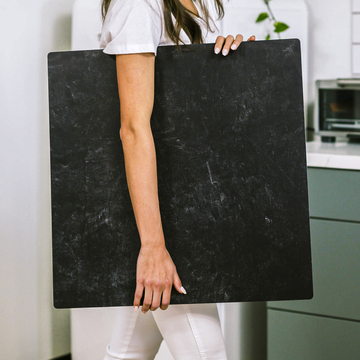Let me tell you a story that might sound familiar. Last year, I bought what looked like a perfect marble photography backdrop from Amazon. The price was right, the reviews were decent, and the product photos looked professional. But when it arrived? Let's just say the disappointment was real.
That experience led me down a rabbit hole of testing dozens of backdrops - from bargain-bin finds to premium surfaces. What I discovered changed how I approach food photography forever. Today, I'm sharing those hard-earned lessons with you.
The Ugly Truth About Cheap Backdrops
Here's what most photographers don't realize until it's too late: that $20 Amazon backdrop is probably costing you more than you think. Not just in money, but in wasted time and missed opportunities.
5 Ways Budget Backdrops Sabotage Your Shots
- Lighting nightmares: They reflect light unpredictably, creating hotspots
- Fake textures: Digital prints that look nothing like the real thing
- Durability issues: Warping, scratching, and fading after minimal use
- Color inconsistency: What you see online isn't what arrives
- Workflow headaches: No beveled edges or weight means constant adjusting
What Professionals Know That Hobbyists Don't
After working with commercial clients and teaching food photography workshops, I've learned that the backdrop is just as important as your lighting setup. Here's why the pros invest in quality surfaces:
- They save hours in post-production by getting it right in-camera
- They maintain brand consistency across all product images
- They withstand daily use without degrading in quality
- They offer versatile shooting angles in a single surface
My Personal Turning Point
I'll never forget the shoot that changed my perspective. A client needed e-commerce images for their premium chocolate line. The Amazon backdrop I brought reflected light so badly we lost half the day fixing it in Photoshop. That's when I realized: sometimes the cheapest option is the most expensive.
The next week, I invested in professional-grade surfaces. The difference wasn't subtle - it was transformative. Suddenly, my images had depth. The colors stayed true. The surfaces worked with my lighting, not against it.
The Smart Photographer's Checklist
Before you buy another backdrop, ask yourself these questions:
- Will this last through 100+ shoots?
- Does it handle both flat lays and angled shots?
- Can I trust the colors to stay consistent?
- Will it make my editing process easier or harder?
- Does it elevate my brand's perceived value?
If you answered "no" to any of these, it might be time to reconsider your backdrop strategy. Remember: your photography is only as strong as your weakest element. And for most of us starting out, that weak link is often the surface we shoot on.


